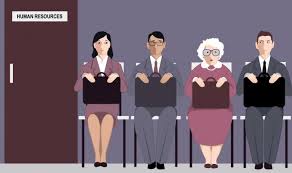 It’s 2019 and in full sprint to the year-end finish. Soon you will launch a boomer/senior, home health tech product or service, or maybe a caregiver advisory service. As your company gets ready to travel into battle or a booth this fall with the sound of lively pitches all around, it is time to for you to revisit this guidance. Perhaps sometime soon, your new or existing company will officially launch a new product or service, or perhaps a long-awaited, over-described and much-anticipated offering will finally ship. First read existing content and research reports on your particular market segment. Look over this updated checklist that continues to hold true – with updated links and references. If necessary, refine tactics:
It’s 2019 and in full sprint to the year-end finish. Soon you will launch a boomer/senior, home health tech product or service, or maybe a caregiver advisory service. As your company gets ready to travel into battle or a booth this fall with the sound of lively pitches all around, it is time to for you to revisit this guidance. Perhaps sometime soon, your new or existing company will officially launch a new product or service, or perhaps a long-awaited, over-described and much-anticipated offering will finally ship. First read existing content and research reports on your particular market segment. Look over this updated checklist that continues to hold true – with updated links and references. If necessary, refine tactics:
1) Is the website crisp and clear? Start with the home page that has modest and friendly graphics and images (not a ransom note with 27 different font size and colors) to identify what the product or service does or is. Don't lead with fear-generating images or force the viewer to start with a video. Skip paragraphs of narrative-laden terminology to wander through before it is apparent what the product or service does. Nor does the reverse make sense -- a single graphic, with an interface designed only to be viewed on a smartphone. Make sure to specify how it works, for whom, with multiple tabs for multiple markets, and device-appropriate viewing. To encapsulate the impact of a product, videos of actual use are best.
2) With every new launch, is there a press release? A single release is inexpensive on Business Wire or PRNewsire -- content that will surface on newly-created Google alerts long after the launch date. Not a PDF file, not a Word file, but a viewable (online) press release with links, kept under 1 page, that is found under your website category of PRESS, MEDIA or NEWS. Descriptive titles are a must -- multi-line titles are ridiculous. To be perceived as an ongoing concern and not have viewers speculate about whether the company is still in business, a press release should be issued for every significant business change, including new executives or customers, moves to new offices, etc., with at least one in the past 3-4 months.
3) Are executives identified in 'About' the company? What's the point of keeping the identities of founders and executives a secret unless there's something to hide? This is as true of offerings that sell through resellers as those that sell direct. (For an example, see an About Us that is not, uh, About Us.) There is absolutely no reason to have to search Google or send e-mails to Info@XYZ - co.com in order to find out who is running the place or tease out that XYZ- co.com is actually a subsidiary of GIANT - CO.com or to call in order to find out that the real service is provided by another company, not identified on the website.
4) Pre-brief an industry analyst and the media. Especially if the product will be launched at a trade show, pre-show briefing of an analyst enables the firm to refer reporters to the analyst to understand where the offering fits in an industry or for just for press quotes that could be included in a launch press release In addition to pre-briefing, if there is a PR firm (or even if there isn’t), contact a local news site and see if they’d like to learn more about a home town entrepreneur – with a great new offering that they (or their families) need to know about.
5) Is the actual product or service going to be available near term? What’s that mean? By the official launch date, some stages of evolution are complete or within a few weeks of completion. For example, there's a working prototype (i.e. no known installation or operational defects); there are identified manufacturers; committed partners; an initial pilot is completed to validate usefulness; the pricing is clear; power requirements are clear; the software works; the product registration and installation processes have been established and validated. It's not okay -- and I would argue a waste of money – if the actual launch date is an unknown or l-o-o-n-g number of months later. Momentum is lost, especially if the reason for the delay is that the pilot revealed that it doesn’t work yet.. Pre-orders seem to be all the (Indiegogo) rage as a marketing tactic -- hopefully the ultimate offering on whatever date doesn't result in the rage of missed expectations, or a nasty review on an Amazon website.
6) Software vendors -- design with market input (not your grandmother!). Prospective B2B buyers are jaded -- they've seen many variants of software, for example, for home care services, senior housing, or non-profit segments. Although it may have seemed that way in 2016, these are not industries ready for 'if we build it, they will come'. And I hear too many entrepreneurs say the following: "In my personal experience, my family had issues with (fill in the blank) with my own (grand)parents, therefore my offering will address those issues by (fill in the blank)." For most participants in the age-or care-related industry, a personal experience underpins enthusiasm to be in this emerging space. If that is a given for your company, shake it off -- validate prospective value through interviews, surveys, and follow with software design or website walkthroughs -- before casting the solution into the concrete of release-ready code. And if you're a smartphone or app vendor, test your offering with the full range of older adults, including people aged 75+.
7) Service providers -- what's different, who will buy, at what price, where do they live? With an inbox filled with "we are introducing a new service for (pick one -- finding caregivers, housing, helping families, seniors) that will be the first comprehensive guide/service to (fill in blank)". But really, there is no need to do a nationwide media launch of a service that is initially only available within a single geographic region. On the flip side, if the service is in the process of nationwide expansion, call or stay tuned – maybe your product fits into the service or ecosystem.
8) What's that product or service category, anyway? It helps those who might want to accurately position what you're doing -- and this includes press, analysts, investors, prospective partners and resellers -- to understand the category placement and not have to inquire amid a sea of obfuscation and inappropriate terminology. Is this a home health care service or a companion care service? They are licensed differently -- does the firm offer both, at different prices? Is this a tool for chronic disease management (not exactly 'wellness') or is this one for tracking a fitness regimen (sounds like wellness)? Finally, as with fall detection, is this product really a feature of other products or is it viable on its own as a solution? As with a new variant of sensor-based home monitoring, is this a category, even if it is renamed IoT? And if this is the revival of a previous movement, like smart homes, why are new-aged versions less intrusive, more robust and secure than previous home security/automation?
9) PR team, this means you. Before scheduling a briefing, please do the research in case your clients don't tell you much. In the category of baffling, I've received requests to brief me about a vendor, an offering, a launch that I've already written about or mentioned for months. Just because it's Day One for you, the PR firm, and you're excitedly new to this space, doesn't mean that your client and offerings are heretofore completely unknown. Please search the Internet first. Perhaps you are helping to inform about a new release, and the news is actually new. Or it is not new, just repackaged. Just know what has preceded it -- and build upon prior activity. Anything else reflects poorly on the company that hired you. It can’t hurt to read up on briefing analysts.
10) As for the non-launch launch, what if market interest happens anyway? Can you offer up a customer or user to interview, can you say how your offering fits into the marketplace (current use of your product, who are other players, market size if available, and target audience)? And most important, can someone in this very needy market actually buy that robotic cat? (Good answer: Yes). If you're not ready, say you're not ready. You know that there is a gap in capability in your target market and your company is just the right company to fill that gap -- and even better, do it with software on an existing hardware or software platform. No need to rush or launch too early -- because that's the thing about an emerging market to serve an aging population. The customer segment will be around for a long time. Let's not disappoint them.
Hope to see you at upcoming events in Naples, Washington, and Tampa!
[To read more about this topic, click on Aging in Place Technology Watch]
 Getty images show advertising’s ageist stereotypes. A new report from AARP this week zeros in on something we all knew: Advertisers focus on the young – not unlike the tech firms who make products being advertised. Despite the 50+ population representing one third of the US population, they only show up in 13% of advertising imagery. The AARP report authors analyzed the Getty images – and observed that even though 69% of people aged 65-73 own a smartphone, less the 5% of the images of technology included any older adults. The same held true for images of worker. while one third (53 million) of the labor force is 50+, only 13% showed them working -- otherwise they were shown at home, with a partner or in a medical setting. And the kicker: 81% of the employees of advertising agencies are younger than 55 -- their ageism is well-documented.
Getty images show advertising’s ageist stereotypes. A new report from AARP this week zeros in on something we all knew: Advertisers focus on the young – not unlike the tech firms who make products being advertised. Despite the 50+ population representing one third of the US population, they only show up in 13% of advertising imagery. The AARP report authors analyzed the Getty images – and observed that even though 69% of people aged 65-73 own a smartphone, less the 5% of the images of technology included any older adults. The same held true for images of worker. while one third (53 million) of the labor force is 50+, only 13% showed them working -- otherwise they were shown at home, with a partner or in a medical setting. And the kicker: 81% of the employees of advertising agencies are younger than 55 -- their ageism is well-documented. It’s 2019 and in full sprint to the year-end finish. Soon you will launch a boomer/senior, home health tech product or service, or maybe a caregiver advisory service. As your company gets ready to travel into battle or a booth this fall with the sound of
It’s 2019 and in full sprint to the year-end finish. Soon you will launch a boomer/senior, home health tech product or service, or maybe a caregiver advisory service. As your company gets ready to travel into battle or a booth this fall with the sound of  The last gasp of August and Labor Day's hurricane Dorian is behind us. Note how a
The last gasp of August and Labor Day's hurricane Dorian is behind us. Note how a 
 MIT Technology Review’s "Old Age is Over" is thought provoking. Or in the case of the technology section – "
MIT Technology Review’s "Old Age is Over" is thought provoking. Or in the case of the technology section – "